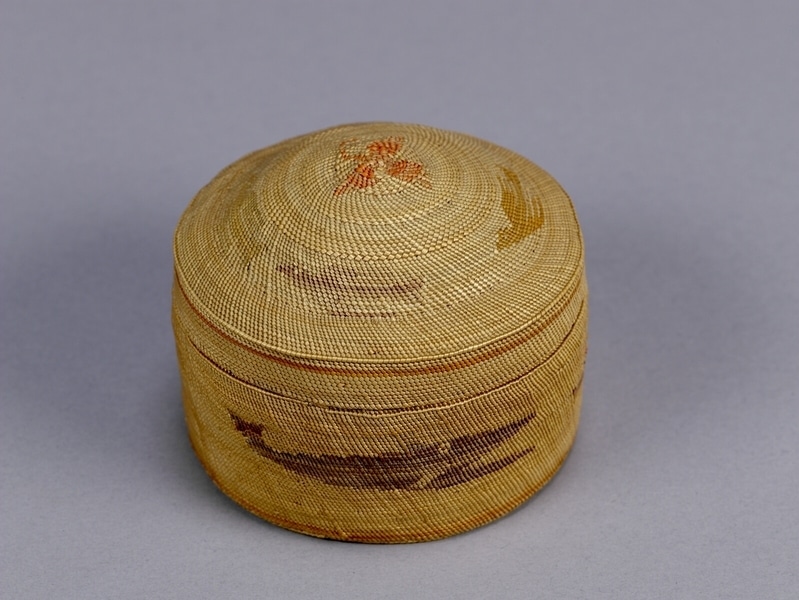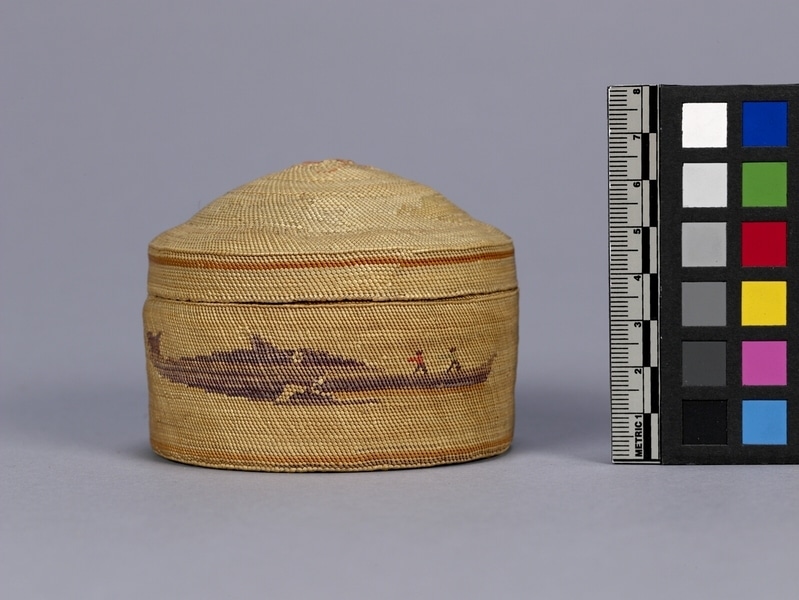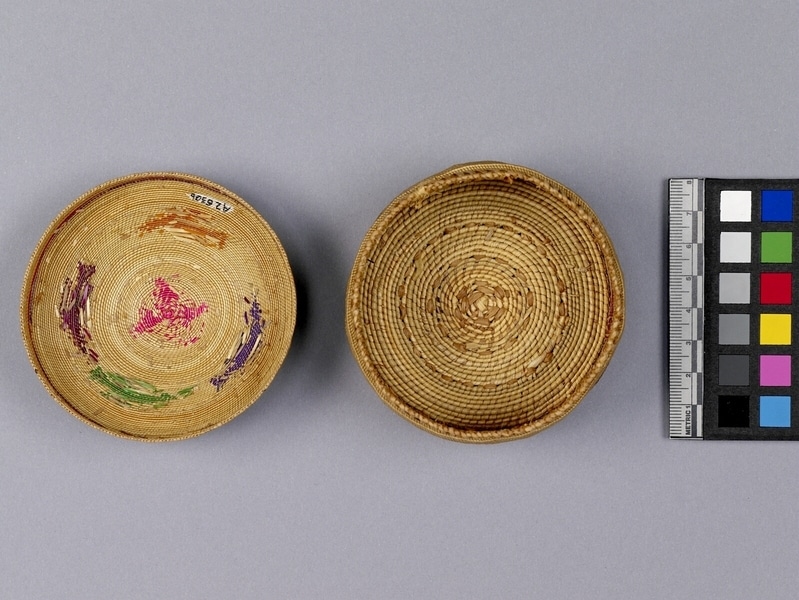Basket Item Number: A2630 a-b from the MOA: University of British Columbia



Description
Small cylindrical woven basket with dome-shaped, fitted lid (part b). One side depicts a whale with jaws open, chasing a canoe carrying two people; on the other side, the whale is swallowing them. Flying birds encircle a floral motif on the lid. Motifs are woven directly into the baskets with dyed grasses; inside this basket, protected from the light, the colours remain vibrant: pink, purple, red, orange, and green.
History Of Use
Nuu-chah-nulth weavers on the west coast of Vancouver Island began creating pika-uu, or decorative “trinket baskets,” in the mid-19th century. As the pressures of colonization and colonial legislation grew for Indigenous peoples, basket making became a way for women to generate income in the new cash economy. Making baskets like this one for sale to outsiders was an extension of the ancient practice of weaving whalers’ hats and more utilitarian objects. Weavers perfected a wrapped-twining technique to make a wide range of new items, including lidded containers, covered glass bottles, whaler-style hats, and carrying bags.
Iconographic Meaning
Motifs on these kinds of baskets depicted whales and whalers, lightning serpents, thunderbirds and later steamships and English words.
Specific Techniques
Wrapped twinning technique using tlii-sikum (bear grass), citapt (swamp grass), picup (red cedar bark) and tutanaxkuk (three-corner grass).
Item History
- Made in Vancouver Island, British Columbia, Canada during 1900
- Owned by Walter C. Koerner before February 26, 1974
- Received from Walter C. Koerner (Donor) on February 26, 1974
What
- Name
- Basket
- Identification Number
- A2630 a-b
- Type of Item
- basket
- Material
- bear grass, aniline dye, cedar bark and grass
- Manufacturing Technique
- dyed and woven
- Overall
- height 7.0 cm, diameter 8.5 cm
Who
- Culture
- Nuu-chah-nulth
- Previous Owner
- Walter C. Koerner
- Received from
- Walter C. Koerner (Donor)
Where
- Holding Institution
- MOA: University of British Columbia
- Made in
- Vancouver Island, British Columbia, Canada
When
- Creation Date
- during 1900
- Ownership Date
- before February 26, 1974
- Acquisition Date
- on February 26, 1974
Other
- Item Classes
- basketry
- Condition
- good